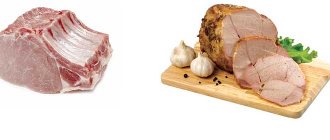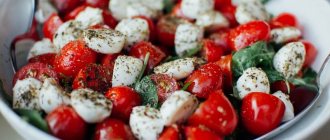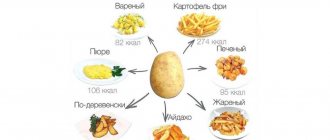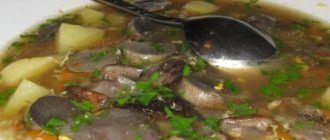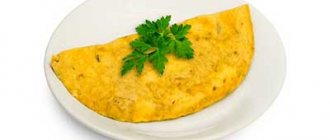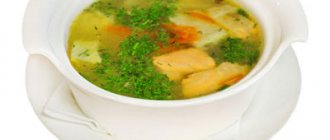Beneficial properties of broccoli
Speaking about the beneficial properties, one cannot fail to emphasize the record content of vitamin C per 100 grams - 89.2 mg, sodium per 100 grams - 33 mg, which affects the state of water-salt balance in the human body, and potassium (316 mg), which supports the functioning of the heart and nervous system. Broccoli also contains a whole range of vitamins, microelements and minerals such as: calcium, zinc, phosphorus, magnesium, manganese, sulfur, fiber, B1, B2, B5, B6, PP, E, K, provitamin A and is an excellent supplier of beta carotene.
What are the benefits of broccoli?
The invaluable benefits of broccoli for the body lie in its following properties:
- contains antioxidants of natural origin;
- strengthens the immune system;
- regulates blood sugar;
- improves the condition of the lens and retina of the eyes;
- contains elements that benefit the liver;
- strengthens the heart and blood vessels;
- improves blood composition.
What are the benefits of broccoli for women?
Many representatives of the fair sex are skeptical about this vegetable, considering it tasteless and bland. The benefits of broccoli for women include the following factors: Positive effect on skin condition. By eating broccoli daily, you prolong your youth.
It is useful to use a medicinal plant for masks, since it contains many vitamins. Vitamin oil from the vegetable is used for hair and nails, helping to strengthen their structure and eliminate fragility.
The product contains a large amount of protein, which has a positive effect on weight loss. Green cabbage is an indispensable product for dietary, vegetarian and lenten dishes.
The beneficial properties of broccoli promote the production of bile. It helps regulate fat levels, thereby helping to eliminate skin imperfections associated with cellulite.
Broccoli is also useful as an assistant in getting rid of carcinogens, toxins and waste. These harmful substances can provoke the development of tumors of the uterus, breasts and ovaries. The inflorescences contain antioxidants that can combat this problem. The nutrient-rich composition will benefit your hair and nails. The content of indoles maintains hormonal balance.
Benefits of broccoli for children
This type of cabbage is one of the ten healthiest foods. The plant is often used in children's nutrition. As part of a child's diet, broccoli can provide benefits: Helps fight constipation and establish normal bowel movements due to the presence of a large amount of fiber. Useful microelements help remove harmful substances from the body and normalize the functioning of the gastrointestinal tract.
The benefits of broccoli for babies are based on the hypoallergenic nature of the product. You can feed your baby purees or vegetable juices from a very early age without fear of causing harm. The vitamins in broccoli help improve a child's immunity. The functioning of the nervous system improves, since cabbage is famous for the presence of a large number of useful micro- and macroelements.
The content of sulforaphane and diindolylmethane prevents inflammation of the respiratory system. If a child is overweight, you need to include broccoli in the diet - it contains fiber and proteins, quickly saturates the body, with a minimum of calories. Cabbage has antiparasitic effects.
Calorie content of broccoli per 100 grams of product in various types
In the table of caloric content of broccoli per 100 grams of product, you can easily create a diet for yourself with this product. And understand in what form it is best for you to prepare it.
calorie content of boiled broccoli – 27 kcal/100 grams
calorie content of steamed broccoli – 27 kcal/100 grams
calorie content of broccoli puree soup – 85 kcal/100 grams
fried broccoli calorie content – 28 kcal/100 grams
broccoli in the oven calorie content – 80.5 kcal/100 grams
calorie content of broccoli with egg – 72.5 kcal/100 grams
broccoli with cheese calorie content – 164 kcal/100 grams
calorie content of baked broccoli – 23 kcal/100 grams
calorie content of frozen broccoli – 23 kcal/100 grams
broccoli in sour cream calorie content – 92.5 kcal/100 grams
calorie content of broccoli boiled with salt – 35 kcal/100 grams
fried broccoli calorie content – 28 kcal/100 grams
Stewed broccoli calorie content – 37 kcal/100 grams
calorie content of raw broccoli – 34 kcal/100 grams
steamed broccoli calorie content in a slow cooker – 28 kcal/100 grams
calorie content of fresh broccoli – 28 kcal/100 grams
We can say with complete confidence about the unconditional benefits of this plant on the human body.
How to cook broccoli properly
Due to the high content of purine compounds, broccoli is practically not consumed raw, as well as its decoctions in baby and dietary foods. In branched varieties, modified shoots with tightly closed, underdeveloped buds are eaten. Boiled in lightly salted water, 20-centimeter stalks of shoots from the second or third harvest taste like green asparagus. In our most common variety of broccoli with green heads, both the heads and the tender stems of the cabbage are eaten.
You can bake broccoli in the oven, use it to make salads, soups, side dishes, or eat it boiled or fried. A very tasty dish - broccoli baked in sour cream or milk sauce, sprinkled with cheese - even the little picky ones will like this dish.
To prepare this product, you need to disassemble it into individual inflorescences and tender stems, rinse in a colander with cold running water and place in boiling salted water, cook for 8-10 minutes. Broccoli prepared in this way can be used for baking, frying, and simply as a side dish for meat dishes.
Can you eat broccoli raw?
Most of us are accustomed to the fact that fresh, unprocessed vegetables are better absorbed by the human body than boiled, fried or stewed. However, no one can definitely answer the question of whether it is possible to eat broccoli raw.
Some experts claim that when cooked, the plant loses more than half of its beneficial properties, while others believe that properly processed or blanched cabbage is healthier. There are a huge number of recipes for dishes that include fresh green cabbage among the ingredients. In Europe and America, this cabbage is often consumed unprocessed and made into salad.
For those who want to lose weight and are watching calories, it is recommended to blanch cabbage. To do this, simply place the heads of cabbage in a container of boiling water for a few seconds. Season the vegetable with olive oil, add your favorite spices and serve. Green cabbage is especially useful for pregnant women and young children - it is easily digestible and contains many vitamins.
Cauliflower broccoli calories and sugar
Despite the fact that broccoli is quite low in calories, when you look at the composition of carbohydrates, you can see sugar. Yes, its quantity is not so significant, only 1.7 grams per 100 grams, but if you consider that the entire inflorescence weighs about 400-500 grams, and during the cooking process the volume of the product is reduced, respectively, the average portion will be 200-250 grams. Using the calculation method, 3.4-4.25 grams of sugar is 1 heaped teaspoon of sugar or approximately 16 kcal. Does this mean that, despite the benefits of broccoli, you should exclude it from your diet? Of course not! The fact is that the concentration of sugar in it is quite small, and to eat even 15 grams (a relatively acceptable norm for those losing weight) of sugar using this product, you will need a huge portion.
Mineral composition
The ratio of minerals (macro- and microelements) contained in broccoli is presented in the table using diagrams.
| Minerals, content | Share of the daily norm for 100 g | |
| Calcium | 47.0 mg | 4,7% |
| Iron | 0.7 mg | 7,3% |
| Magnesium | 21.0 mg | 5,3% |
| Phosphorus | 66.0 mg | 9,4% |
| Potassium | 316.0 mg | 6,7% |
| Sodium | 33.0 mg | 2,5% |
| Zinc | 0.4 mg | 3,7% |
| Copper | 0.0 mg | 5,4% |
| Manganese | 0.2 mg | 9,1% |
| Selenium | 2.5 mcg | 4,5% |
| Fluorine | n/a | 0,0% |
Calories1819
Vegetables are an indispensable food product. They saturate the human body with healthy fiber, are perfectly digestible and are available for consumption all year round. Among these vegetables, broccoli is very popular. This subspecies of cauliflower has many beneficial properties and a delicate taste. The vegetable enjoys a special reputation among people who adhere to proper nutrition or diet. Broccoli has a low calorie content, but the vegetable is still considered a very nutritious product.
Broccoli negative calories
There is a myth about negative calories, which includes almost all vegetables and some fruits. This also includes broccoli. Let's sort it out in order. There is no negative calorie content, because absolutely any product has a calorie content. But the body can spend much more energy on digesting food than it contains. This is where the myth of “negative calories” comes from. As for the list of products, everything is purely individual (for example, weight, ratio of fat and muscle tissue). But you can help your body burn more calories with a little trick - chewing thoroughly. Since childhood, we have heard that food needs to be chewed carefully and slowly, but we don’t understand why. The secret is that the digestion process occurs regardless of the density of the food eaten, but the costs may vary. That is why the better the food is chewed, the better for the figure.
The benefits and harms of boiled broccoli
To prevent diseases, it is recommended to add 200 g of broccoli to your food daily. Cabbage is a fat-burning crop. The mineral properties contained in the vegetable give cabbage its special value. Potassium normalizes the percentage of salt, calcium and phosphorus are an integral component needed for the brain and bones, cobalt and iron help in hematopoiesis. Broccoli destroys living cells, cleanses the intestines of cholesterol, strengthens blood vessels and restores the skin.
Despite the large number of useful substances that are included in the composition, sometimes boiled broccoli can be harmful. A limitation to the use of broccoli in food is the increased acidity of gastric juice. Before treatment, including this vegetable in your diet, you should consult your doctor.
Can you eat broccoli for gout?
Broccoli is a dietary product with a huge content of beneficial vitamins and fiber, which has a hematopoietic, soothing, and choleretic effect. For gout, dietary nutrition is indicated, and broccoli is always included in the diet of patients.
Doctors recommend that patients with gout include broccoli in their weekly diet several times. It is recommended to buy young cabbage inflorescences, which in their raw form are excellent for fresh salads and side dishes. Cooking broccoli is very easy. You can cook vegetable soup , make a sauce, a pie with vegetables , an omelet with an egg, a stew, or simply steam or boil cabbage.
Nutritional value and chemical composition of fresh broccoli
Fresh broccoli contains: proteins - 2.8 grams, fats - 0.4 grams, carbohydrates - 6.7 grams, dietary fiber - 2.5 grams, water - 89 grams, mono- and disaccharides - 1.8 grams, ash - 0.86 grams.
Vitamins in broccoli
Macronutrients in broccoli
Micronutrients in broccoli
Calorie content of broccoli - revealing secrets about products on Pitanie4Zdravie.ru
Share the article and everyone will know that you care about your health and will be jealous! Thank youツ
—> 08.01.20203255
Broccoli, or cabbage, is an annual vegetable crop belonging to the cruciferous family. In appearance, it resembles cauliflower, but the main difference is the longer stem, dark green color and shape - the cabbage inflorescences are pressed against each other. Broccoli is used entirely in cooking, so we can safely say that its inclusion in the diet will make many dishes original and piquant. 100 grams of raw broccoli contains 34 kcal, but the range of useful components is significantly higher than that of cauliflower with the same energy value.
What is broccoli
A cabbage vegetable, a member of the Cruciferous family, native to the Mediterranean. Its origin is lost in the centuries and it is not known for certain how the Italians managed to obtain such a variety. There is a version that the great-grandmother of broccoli was cauliflower. But for years and even centuries, the strange broccoli did not leave Italy. What does broccoli look like? Its appearance makes it easy to distinguish it from other species:
- forms a massive, spreading rosette of leaves on long petioles;
- the largest plant reaches 90 cm;
- inside the leaves, green, blue or emerald buds-inflorescences are formed on the peduncles, which are used for food;
- per season, a head grows weighing from 500 g to 1 kg, which depends on the variety;
- additional peduncles are formed on the side shoots;
- grows from 50 to 150 days;
- like any cabbage, there are early, middle and late varieties.
The taste of broccoli is unique, a little similar to cauliflower, which is not inferior in the content of useful substances.
When the main head is cut, do not rush to pull out the healthy cabbage. It continues to bear fruit due to lateral stepsons, so the harvest can be obtained many times. This ability extends the growing season and increases productivity.
Types of broccoli
Broccoli comes in three main types:
- Calabrian or Calabrese (classical), which forms loose, green heads;
- red, similar in appearance to colored;
- asparagus (Italian), forming separate stems that taste similar to asparagus.
It is not easy to review broccoli varieties due to their diversity. Varieties have been developed for northern latitudes, the middle zone, and southern regions. The most productive hybrids are: Arcadia F1, Fiesta F1, Lucky F1, Marathon F1, Macho F1, Laser F1. But this is just the tip of the iceberg. Each vegetable grower can choose the varieties he likes, taking into account the local climate.
You need to monitor the development of cabbage and not miss the moment when the heads are green and dense. If they “go into color” and peduncles with yellow flowers appear, then the head can no longer be used for food.
What is the difference between broccoli and cauliflower?
Outwardly, the “colored noblewoman” and the “Italian” are similar. They differ in the color of the head and its looseness. Cauliflower has a dense head, while broccoli has a looser head.
The remaining external characteristics are similar: the same rosette of leaves, inside which the head is formed, is divided into mini-heads during processing. They are similar in taste and the presence of components important for the body. The vitamin and mineral set is somewhat different, but both varieties are useful. This indicates their close relationship.
Nutritional Components
Broccoli is an excellent source of vitamins K, C, folic acid and chromium. This vegetable contains a lot of fiber and proteins, vitamins B, A, E, as well as manganese, phosphorus, choline, potassium, copper, selenium, Omega-3 fatty acids and beneficial phytonutrients. In addition to all this, the vegetable contains virtually no calories, since almost 9/10 consists of water.
Vitamin K contained in cabbage is necessary for proper blood clotting and protein formation. Folic acid is responsible for the production of new cells in the body, and vitamin C creates collagen, an essential component of bones, cartilage and skin. In addition, ascorbic acid is known to be one of the most powerful antioxidants.
Among the most beneficial phytonutrients contained in this type of cabbage are sulforaphane (prevents cancer), carotenoids (improves vision), kaempferol (protects against cardiovascular diseases, inflammation, allergies, cancer), quercetin (important for hypertensive patients) [8].
Nutritional value per 100 g [9][10]
| Calorie content | 34 kcal |
| Water | 89 g |
| Squirrels | 2.8 g |
| Fats | 0.04 g |
| Carbohydrates | 6.6 g |
| Vitamin A | 31.2 mcg |
| Vitamin C | 89.3 mg |
| Vitamin E | 0.77 mg |
| Vitamin K | 101.4 mcg |
| Vitamin B1 | 0.08 mg |
| Vitamin B2 | 0.13 mg |
| Vitamin B3 | 0.65 mg |
| Vitamin B5 | 0.55 mg |
| Vitamin B6 | 0.21 mg |
| Folic acid | 63 mcg |
| Kholin | 18.7 mg |
| Calcium | 46.3 mg |
| Iron | 0.74 mg |
| Magnesium | 22 mg |
| Phosphorus | 68 mg |
| Potassium | 315 mg |
| Sodium | 34 mg |
| Zinc | 0.42 mg |
| Copper | 0.06 mg |
| Manganese | 0.22 mg |
| Selenium | 2.6 mcg |
How to choose and store correctly
The first rule for choosing broccoli is the same as when buying other vegetables. The cabbage should be free of bruises, rot and stains, the stem should be firm and of the same color.
The color of the vegetable can vary depending on the variety from bright green to purple-green. Under no circumstances should you take vegetables that have yellow flowers: this is a sign of overripeness. If leaves are attached to the inflorescence, they should be fresh and bright, not wilted.
It is easy to keep the vegetable fresh if you place it in a plastic bag without air and put it in the refrigerator. In this form it can be stored for up to 10 days. You should not wash broccoli before storing: water will speed up the spoilage of the product. Pre-blanched vegetables can be frozen and stored for several months. But it is important to use boiled broccoli within 1-2 days.
Harm of broccoli to the body
It is difficult to doubt the benefits of broccoli, but this vegetable can have a negative effect on the body. In cases where a person has been diagnosed with chronic gastrointestinal diseases, and has also discovered allergic reactions to foods containing vitamin C, it is better not to eat broccoli. You should consult your doctor about taking vegetables.
The main negative effects of broccoli manifest themselves in the form of:
- Rash (hives), this allergy is associated with a high concentration of vitamin A;
- Central nervous system disorders, such as poor sleep, frequent awakenings at night, this disorder occurs due to excess vitamin B;
- Reduced blood clotting (high potassium content leads to the renewal of blood cells, as a result of which the normal course of replacement processes is disrupted;
- Bone fragility (due to the high concentration of calcium, the body begins to flush it out);
- Failure of the functioning of the digestive system (after the intake of coarse fiber in a large volume, the intestinal microflora is disrupted).
In addition, do not forget that including only broccoli in the diet is prohibited. Often, representatives of the fair sex, in a thirst to lose weight, prepare dishes only from the specified plant crop in order to saturate the body with useful substances. However, in excess, this product can be harmful to health, so it must be consumed in limited quantities at certain intervals.

